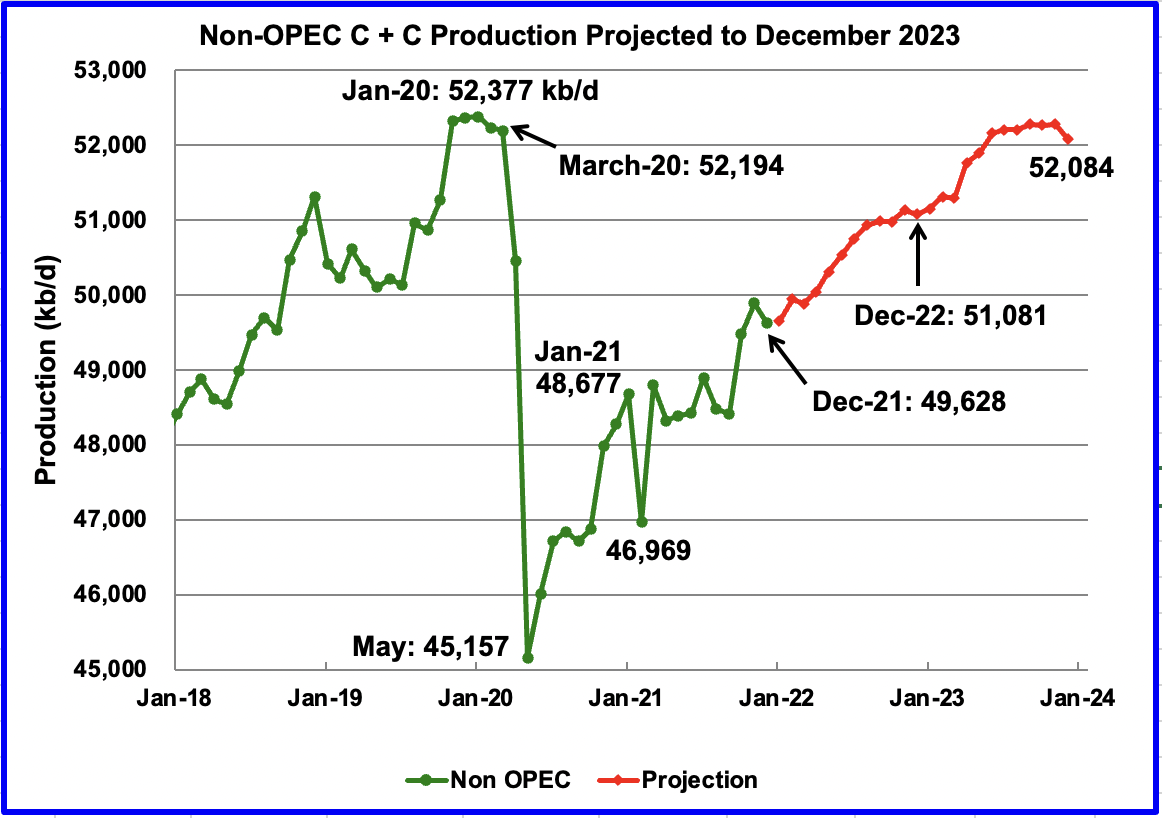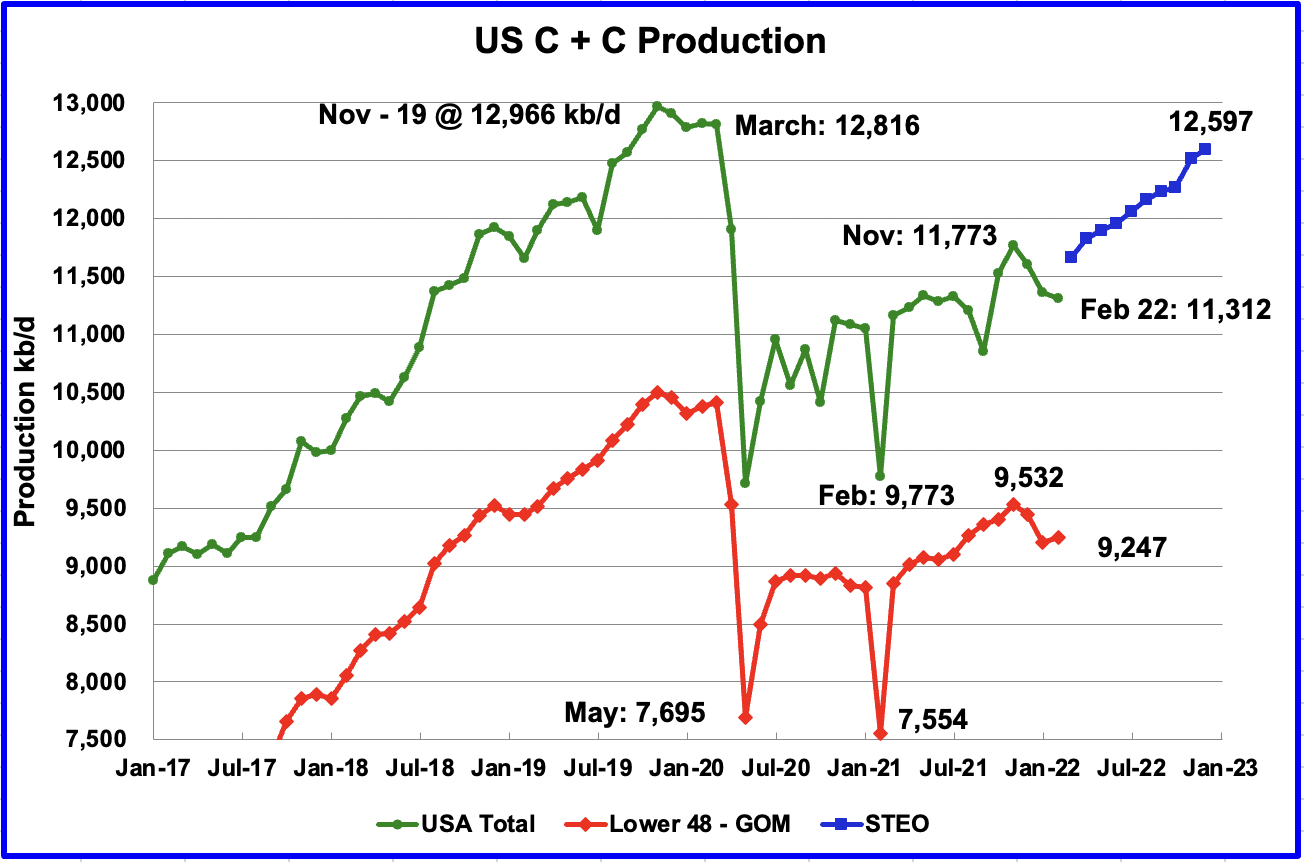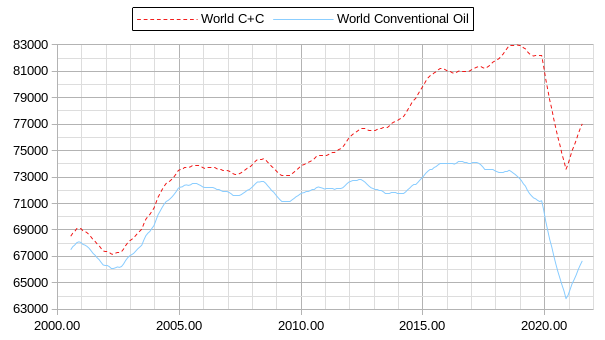A guest post by Ovi
Below are a number of crude oil plus condensate (C + C ) production charts for Non-OPEC countries created from data provided by the EIA’s International Energy Statistics and updated to January 2022. This is the latest and most detailed world oil production information available. Information from other sources such as OPEC, the STEO and country specific sites such as Russia, Brazil, Norway and China is used to provide a short term outlook for future output and direction for a few countries and the world.

For comparison, December Non-OPEC chart posted in previous report. No Russian oil sanctions

Updated January Non-OPEC chart with impact of projected Russian oil sanctions.
Read More
